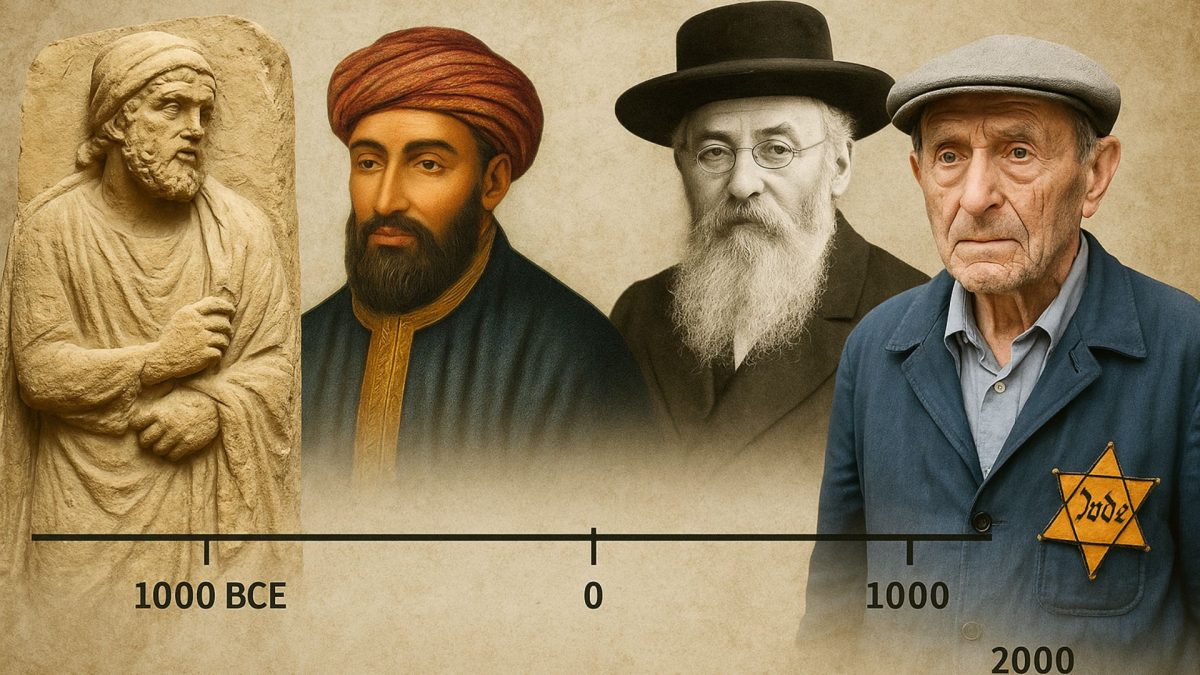In the sprawling landscape of American culinary traditions, few creations hold as cherished a place as the humble donut. Establishments like Dunkin’ Donuts, Tim Hortons, Krispy Kreme and countless neighborhood bakeries have elevated these deep-fried delights to iconic status across the U.S.
But donuts (and the resulting munchkins and Cronuts) would never have seen the light of day if it wasn’t for a bit of Jewish ingenuity from a Russian immigrant named Adolph Levitt and his marvelous donut machine. A machine that brought donuts to the national stage and made it the classic dessert it is today.
To fully appreciate how Levitt revolutionized the donut, we must first journey back to the roots of the donut itself.
A Hole-y Origin
While fried dough balls have seemingly been a thing since dinosaurs ruled the earth, the donut first came to Manhattan, then known as New Amsterdam, under the less-than-appetizing name “olykoeks,” meaning “oily cakes” in Dutch.
The first ring-shaped donut was created in the 1850s. The story goes that a New England ship captain’s mother created the deep-fried dough bites with nutmeg, cinnamon and lemon rind as a pastry that could be stored on long voyages; plus the dried fruit inside was believed to prevent scurvy. To help them cook evenly, she would place hazelnuts or walnuts in the center, hence the name “doughnuts.” Another theory is that the captain requested a pastry he could place onto the spoke handle of the ship’s wheel during a storm to make for convenient eating. Her son and his crewmates went overboard, and from there, donuts spread like wildfire from sailors to bakeries statewide.
The Wonderful Almost Human Automatic Donut Machine
This is where the enterprising Levitt comes into the picture. Adolph Levitt immigrated to New York from Czarist Russia at the young age of 8. When he was a teenager, he began a mercantile business with his brother. The shop was a modest success at first but closed after a few years.
He then bought a small bakery chain selling bagels, muffins and breads. His first several attempts failed miserably; he opened store after store after store, from Milwaukee to New York, only to see them go belly up. He just couldn’t get it right. His first bakery in New York closed down because the fumes disrupted moviegoers in the theater next door.
However, instead of being discouraged, he remained persistent. His second bakery, now in a new location in Gotham, started to gain popularity, especially his donuts. People from far and wide would come to try them, and there would be lines out the block with people eager to try Levitt’s donuts. With no way to keep up with the demand, he had to get creative. He realized he needed to make a donut machine.
On the way to a business conference, Levitt sat next to an engineer on the train, and after sharing his idea with him, the engineer agreed to help him devise the contraption. The duo built 11 machines that went kaput before finally getting it right on their 12th try.
Dubbed the “Wonderful Almost Human Automatic Donut Machine,” it churned out donuts at an unprecedented pace. The machine could roll, cut, and fry hundreds of donuts an hour. The machine became a local spectacle in New York City, and soon, his business became a citywide and then a countrywide phenomenon. Levitt wasn’t content with just being a successful entrepreneur. He wouldn’t stop until every American had coffee and donuts for breakfast.
The First American Donut Tycoon
After several years of success in his location in Gotham, he moved the donut shop to a more central location: the theater district in Times Square. The Broadway crowds ate it up.
The donut machine was only the beginning for Levitt, who dreamed of being the Henry Ford of the donut. As his donuts grew in popularity, word about his machine got out. Soon, shops around the country started popping up, having purchased one of his patented machines.
He continued to sell his machines and founded the Donut Corporation of America and Mayflower Donut shops (he was the first person to use the more consumer-friendly spelling “donut”), and with great persistence, he amassed a fortune of over $25 million.
Levitt’s American Dream came true. On the front door of every donut shop he opened was written the following quote: “As you ramble on through life, brother, Whatever be your goal, Keep your eye upon the doughnut and not upon the hole.”
So, as we bite into scrumptious sufganiyot this Hanukkah, or pick up a delicious donut on the go, let’s remember how they got here and who made them possible. And that if we keep our eye on the donut, anything is possible.





















